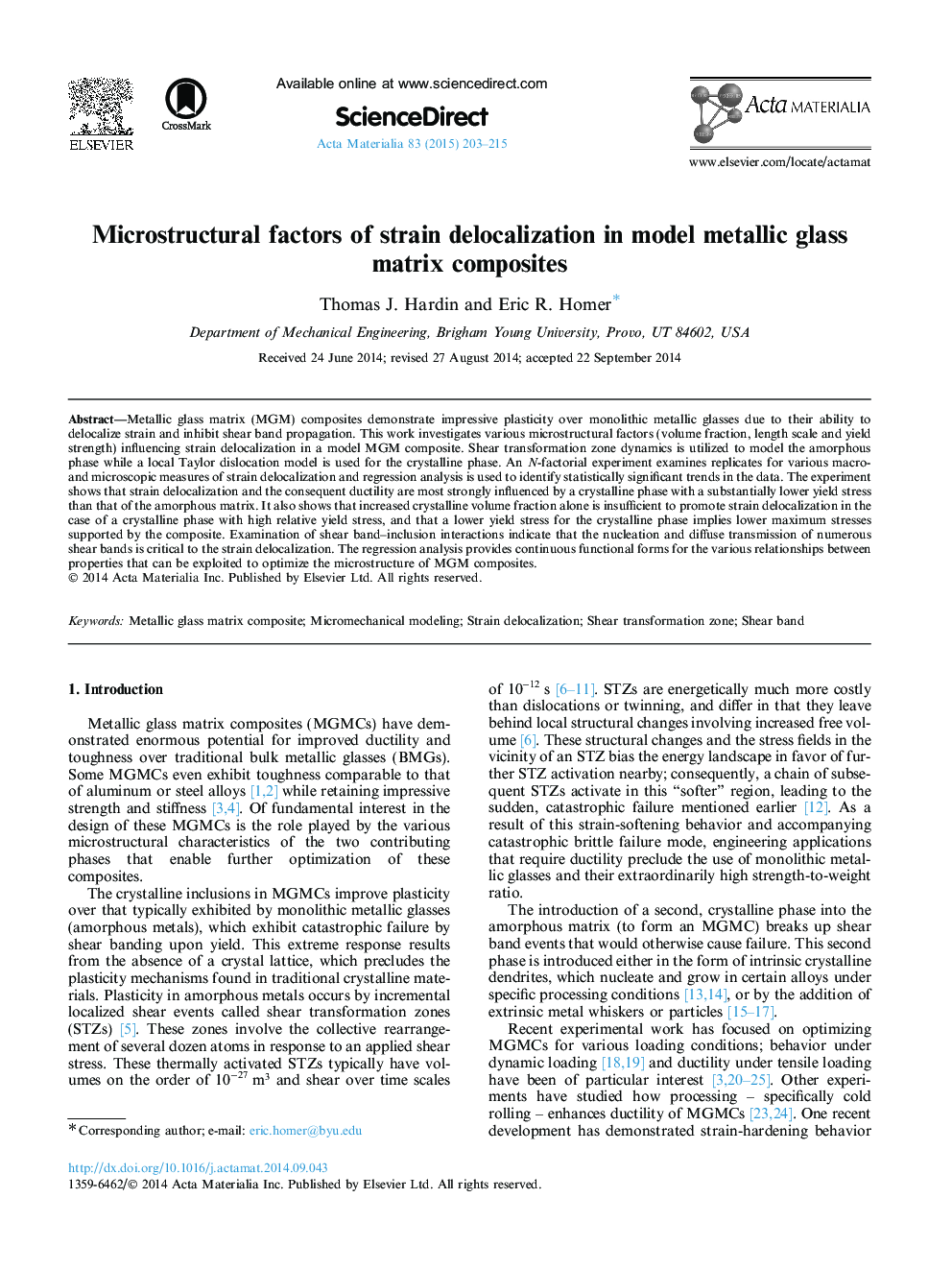| Article ID | Journal | Published Year | Pages | File Type |
|---|---|---|---|---|
| 7880910 | Acta Materialia | 2015 | 13 Pages |
Abstract
Metallic glass matrix (MGM) composites demonstrate impressive plasticity over monolithic metallic glasses due to their ability to delocalize strain and inhibit shear band propagation. This work investigates various microstructural factors (volume fraction, length scale and yield strength) influencing strain delocalization in a model MGM composite. Shear transformation zone dynamics is utilized to model the amorphous phase while a local Taylor dislocation model is used for the crystalline phase. An N-factorial experiment examines replicates for various macro- and microscopic measures of strain delocalization and regression analysis is used to identify statistically significant trends in the data. The experiment shows that strain delocalization and the consequent ductility are most strongly influenced by a crystalline phase with a substantially lower yield stress than that of the amorphous matrix. It also shows that increased crystalline volume fraction alone is insufficient to promote strain delocalization in the case of a crystalline phase with high relative yield stress, and that a lower yield stress for the crystalline phase implies lower maximum stresses supported by the composite. Examination of shear band-inclusion interactions indicate that the nucleation and diffuse transmission of numerous shear bands is critical to the strain delocalization. The regression analysis provides continuous functional forms for the various relationships between properties that can be exploited to optimize the microstructure of MGM composites.
Related Topics
Physical Sciences and Engineering
Materials Science
Ceramics and Composites
Authors
Thomas J. Hardin, Eric R. Homer,
